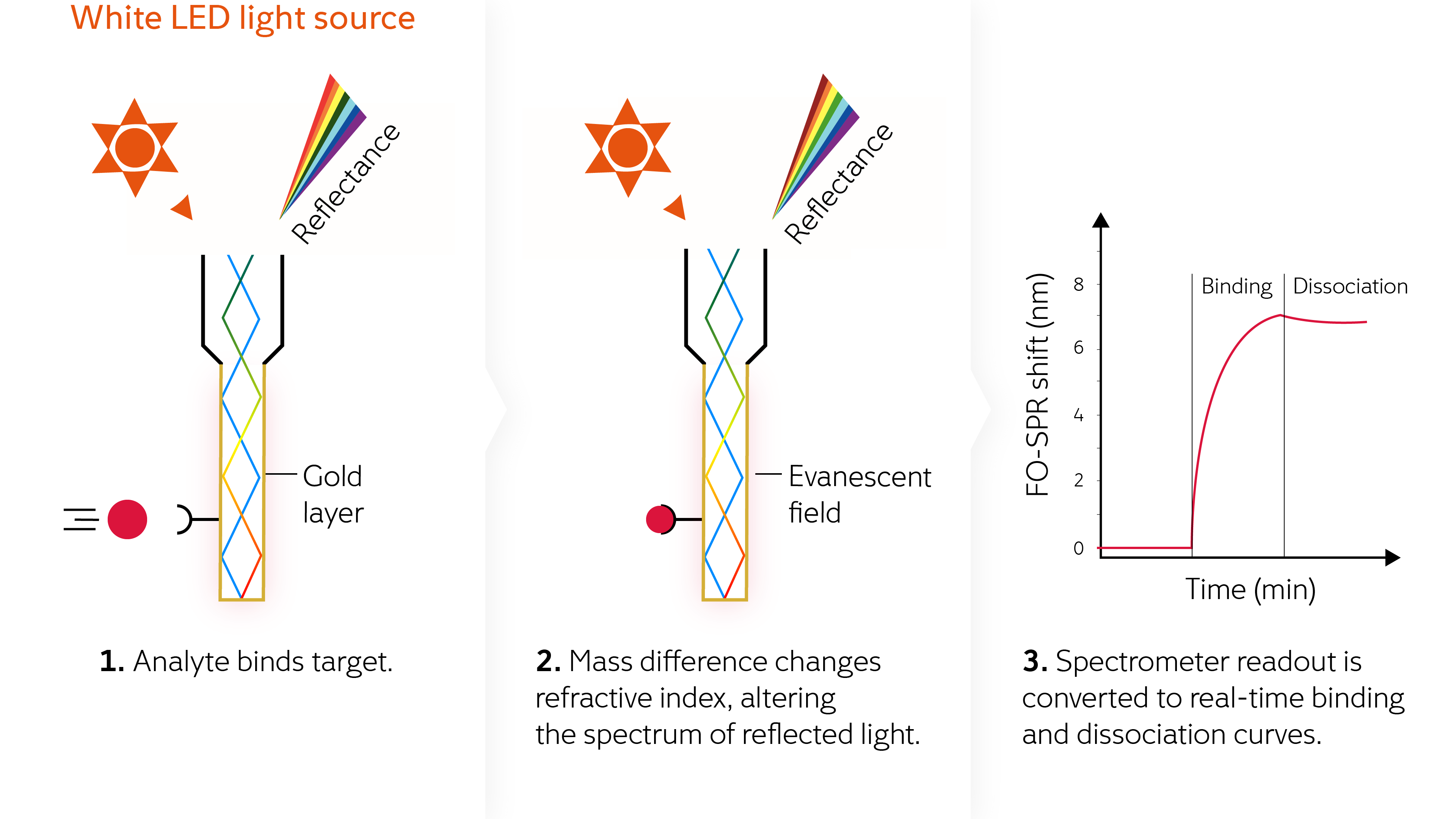Surface plasmon resonance, or SPR, is the resonant oscillation of plasmons at a metal-dielectric interface stimulated by incident light. It causes a reduction in the intensity of light reflected from an electrically-conducting surface at the interface of two media. The “resonance condition”, or wavelength at which the least light is reflected, can be used to determine the mass on the sensor surface.
As the target molecules bind to the sensor surface and replace the surrounding matrix, a change in mass density is detected in real time by monitoring the change in wavelength of the resonance condition.
FOx BIOSYSTEMS uses fiber-optic SPR for biomolecular interaction analyses
In WHITE FOxTM, the SPR effect is achieved by coupling a white light source to the gold-coated fiber optic sensor probe. This consumable probe can sense alterations in the refractive index of the matrix in the evanescent field, a zone up to 200 nm from the outer surface, through changes in the internally-reflected light received by the spectrometer. The change in reflected light over time results in a binding curve.
The probes can simply be dipped into the sample of interest, eliminating the need for a fluidics setup. This allows the FOx technology to be used in purified samples as well as in more complex matrices such as plasma and crude blood as there is no risk of tubes clogging.

